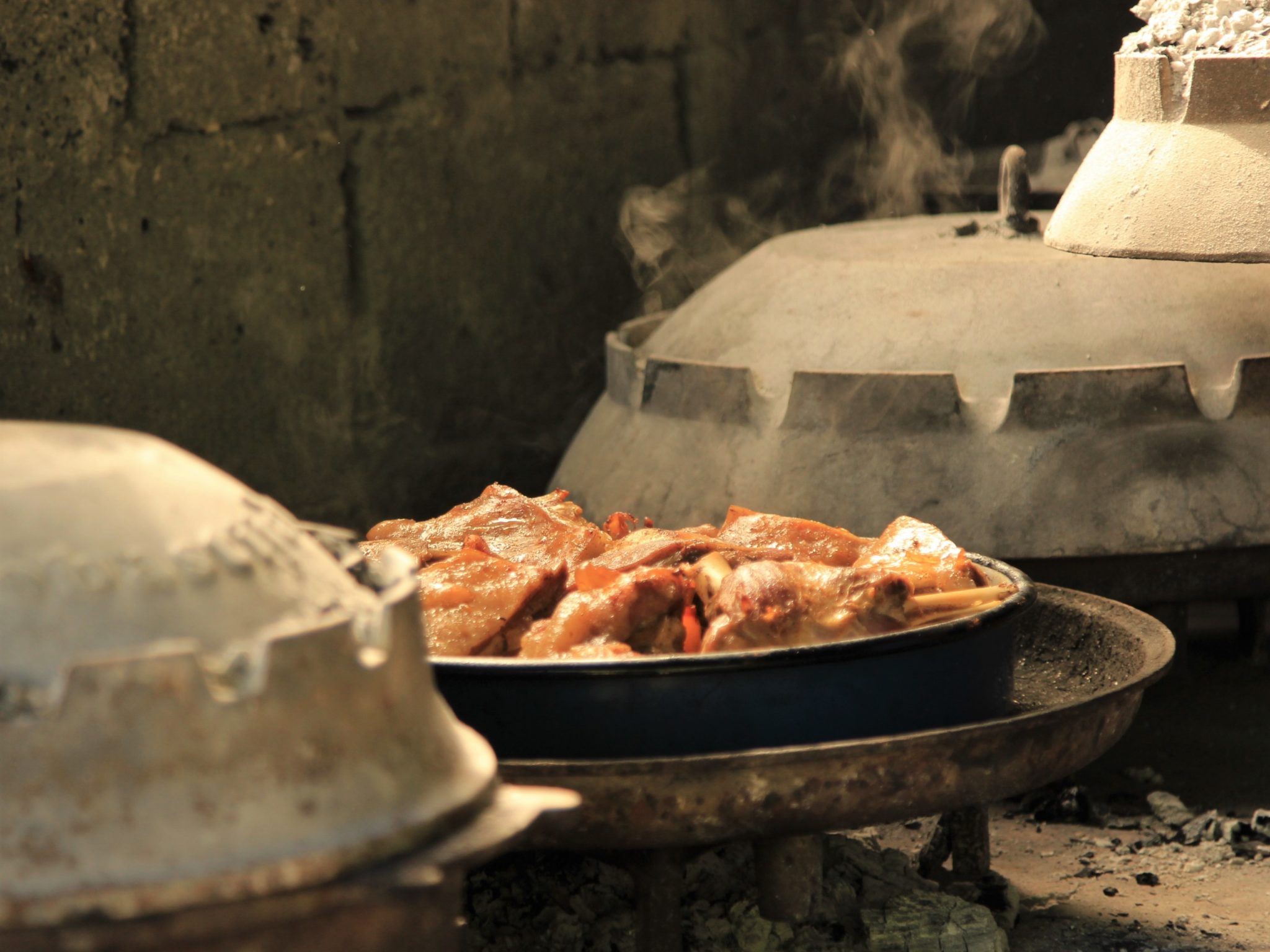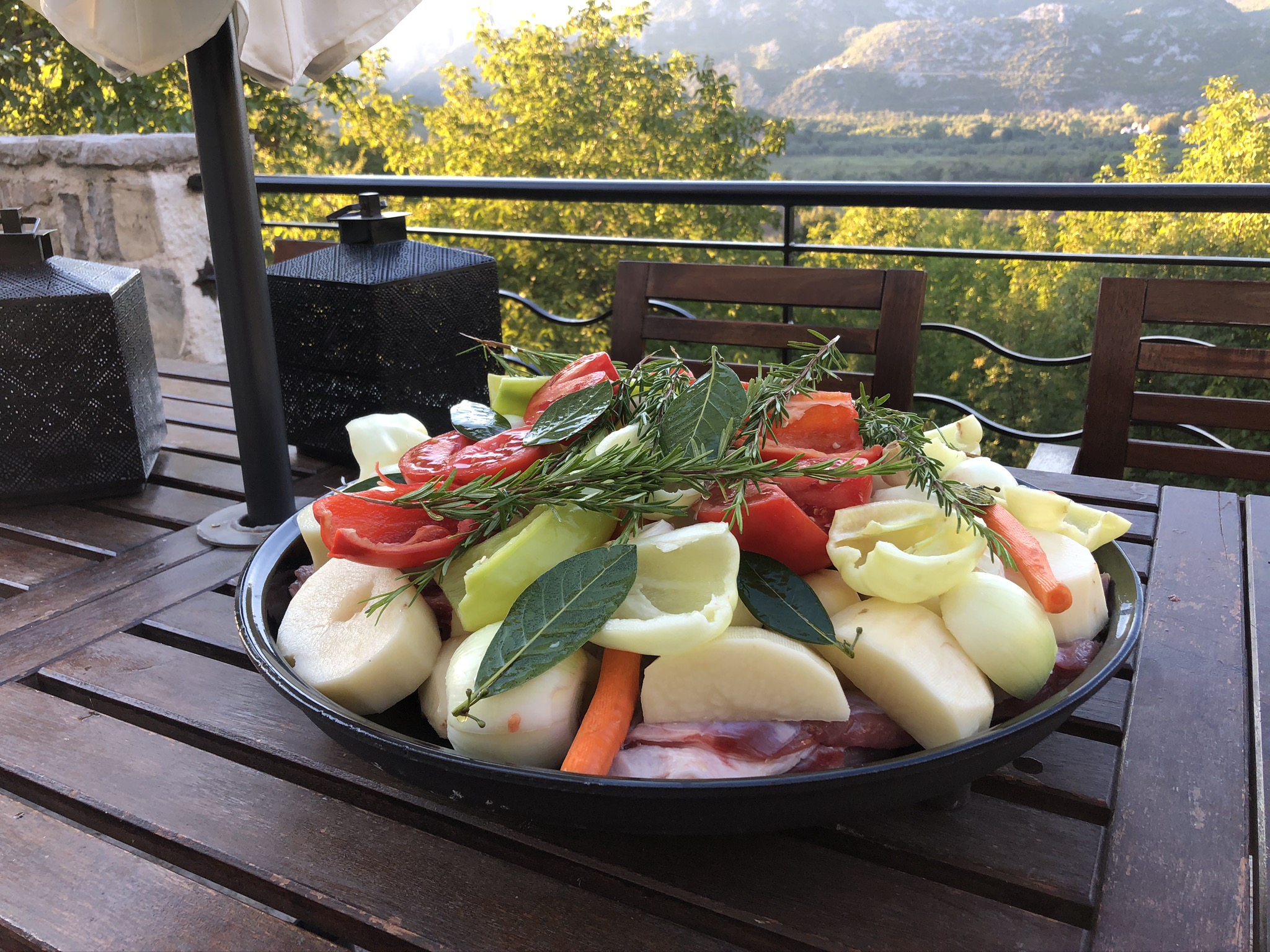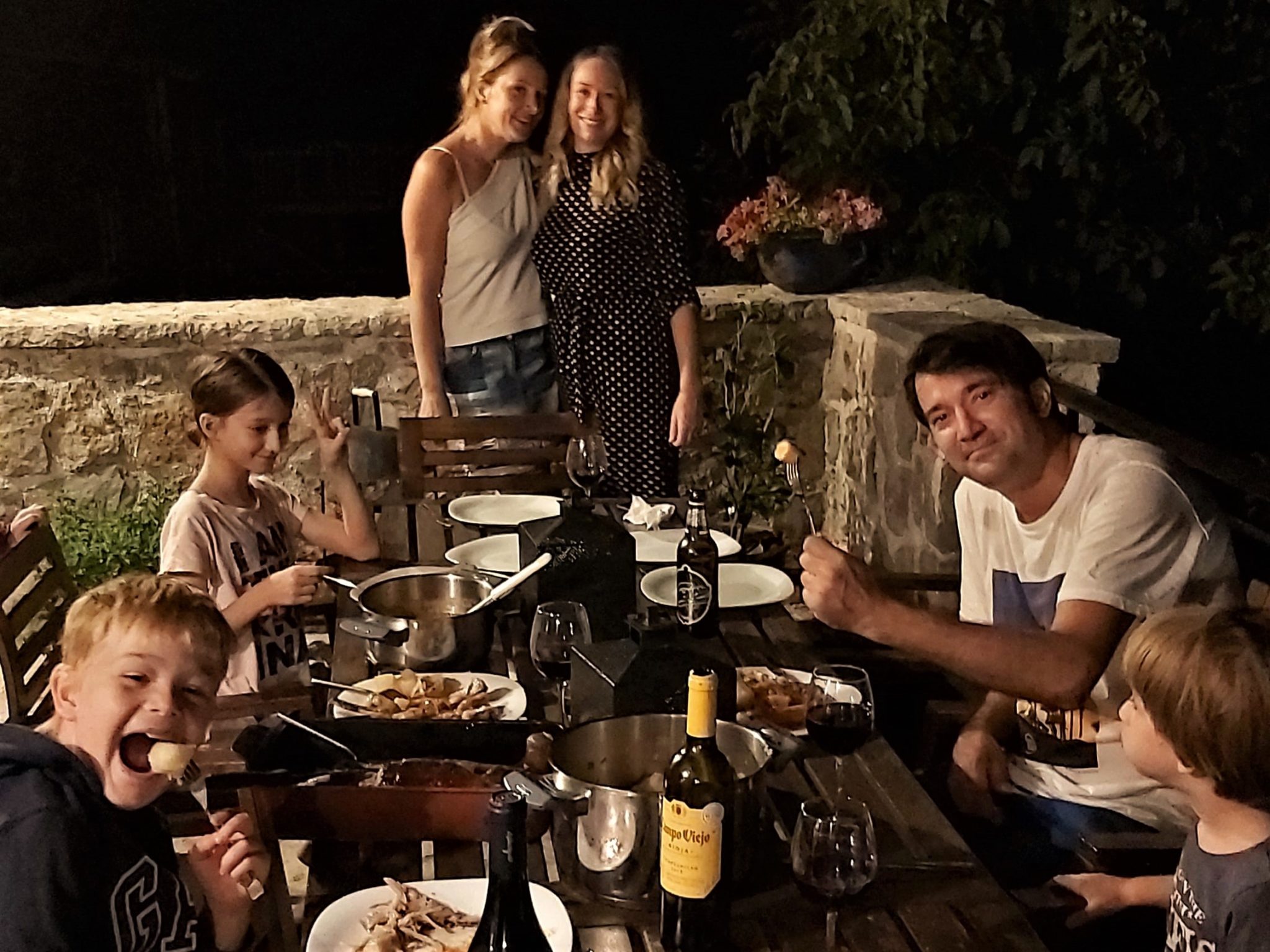Despite the success of our yoga and sound healing retreat the other weekend, it’s not all vegan raw food experiences at Villa Miela! Sometimes, you have to swing in the opposite direction and embrace the best dish to come out of the Balkans – peka – or sač as we call it in Montenegro.
Ever since we bought our second home on Vis island and spent time with the legend that is Oliver Roki, we’ve loved a good peka. It’s an ancient cuisine that sees you placing your ingredients into a deep dish with a cast iron lid, and then slow-cooking the contents with hot embers above and below the pot for 3 to 4 hours. The ultimate slow food!

Montenegrin cooking also has a version of this dish, but here it’s called pod sač, which I’ve sampled many times. Pod sač uses meat, potatoes, plentiful oil and vegeta (a catch-all, ubiquitous Balkan herb blend) and when done well is melt-in-your-mouth delicious – but Montenegrins prefer their food stripped back and simple. Peka on the other hand, takes this basic concept and adds generous levels of Mediterranean flavours. The Croatian version includes plentiful vegetables, natural herbs and wine – it’s food as a luxury, something to fuss over and get exactly right, where every detail has to be just so as a matter of personal pride. That’s the kind of cooking I identify with!
Online tutorials and recipes can only get you so far and with Oliver sadly too far away to give me a Croatian cooking lesson, we enlisted instead our lovely friends Damir and Vanda, who as proud Croatians living in Montenegro were only too happy to pass on their tips for making the perfect peka.

Slow Food Recipe for ‘Peka’ or ‘Pod Sač’
If you’d like to have a go at cooking this centuries-old dish, here’s a peka recipe for beginners (like me!).
1. Make sure you have a good peka pot. Damir nodded approvingly at ours, purchased from a local DIY store. “Good size!” he said, adding that peka is something you have to share, so the bigger the pot, the better.
2. The fire – get it going at least half an hour beforehand, and use wood that burns quickly into charcoal (avoid hardwoods, they are best kept for slow-burning wood stoves). Using a flat stone area like a pizza oven is best, but if like us you have only a fire pit, make sure there is a separate, flat stone area next to it for the actual cooking. Also useful is a small shovel with a long handle – use this to transfer the embers when the time comes!

3. Meat goes into the dish first. Choose something on the bone – lamb shanks, veal ribs, for example, but it has to be something with some good fat on it (not chicken). Figure on a kilo for every 2/3 people, and salt it generously beforehand. Oliver does a sensational octopus peka but you’ll have to bribe that recipe out of him!
4. Layer on your potatoes, peppers, carrots and any other veg you like. Sprinkle in a few chunks of slanina (bacon or lardons) for added depth of flavour and if you like, some lard to help with the sizzle, plus a generous sprig or two of rosemary, thyme, or even sage if you like (all grow naturally here!).

5. Once you get some decent charcoal forming, use your shovel to move some of these coals over to your cooking area, whilst also feeding new wood into the fire. Layer these coals an inch deep, about the same diameter as your pot, then place the dish on top. Lower the lid of the pot into place and then gently layer as many embers as you can onto the lid, where they will be held in place by the flanges (some people use an old metal barrel belt on top of the lid, this holds them in place even better).
6. When the embers start to die out, take some new ones from the fire area and push them under the dish as well as onto the lid – and remember to keep adding wood to the fire so you don’t run out! This is a continual process that has to be done for the next few hours at 15-20 minute intervals, so there’s plenty of time to chat and have a drink while you keep those embers coming. Peka is a very social dish!

7. This is slow-food, so be patient if nothing seems to happen for the first hour or so (or two in our case, by which time it was already dark!) – when you start to smell the meat cooking, lift the lid off using a metal rod and oven gloves (they’re bloody heavy, not to mention hot), and using a big spoon, siphon off as much of the juices from the bottom of the dish as you can. Keep these in a smaller pan, then pour an equal amount of white wine into the dish. Re-cover, and then follow step 6 again for a while!

8. After another hour or so, check inside again to see if the meat is cooked. It should be tender and moist. If it isn’t, repeat step 6 again until it is. When ready, lift it out from under the veg and place it on top. Re-cover, and put as many hot embers as you can on the lid (ignore the ones underneath) for another hour or so – this will crisp the top of the meat and let the remaining juices infuse the veggies and potatoes.
9. After about 3 to 4 hours, your peka should be ready. Brush off the ash and embers from the lid, then remove the lid (use oven gloves to handle the dish itself). Damir likes to then remove the veggies, blend them and then add them to the juices removed earlier to pour back over the rest of the ingredients in the dish, but I like to keep them where they are for texture. The meat should be gorgeously tender, falling off the bones with minimum effort.
10. Eat up, served ideally with the same wine you used for the dish and with fresh bread for mopping up the delicious juices!

My peka pot was large enough to serve six adults and five small children. And I now know what my major winter project is going to be – a peka oven in an unused area of our courtyard, so we can serve up this delicious meal for guests on our hosted lake holidays in 2021.
Practice will make perfect!


Comments